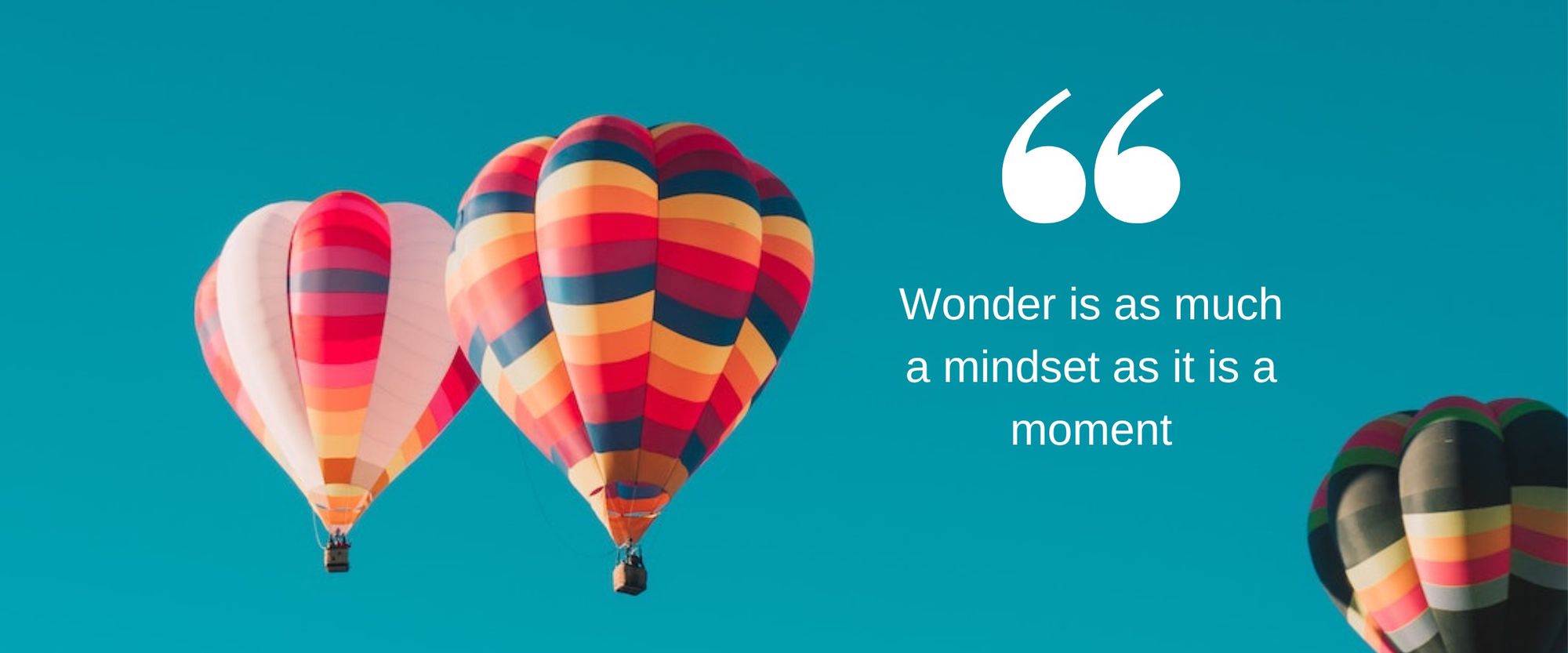Discover the five elements of the wonder cycle, and the awe-inspiring ways they could change how you see the world
Everything is so fast these days. As a population, we are overwhelmed. Inundated by change, distracted by choice, polarised into ever-reductive tribes, we are chasing the manufactured instead of the meaningful. ‘Wonder’ can serve as an antidote to our move-fast-break-things world, but modern life, with its quick fixes and life hacks, is conditioning wonder proneness out of us.
So what exactly is wonder, and how can it help us?
Defining wonder can be a challenge as the very nature of the experience is ineffable, meaning it defies language. Wonder is both a journey and a destination. A verb and a noun. A process and an outcome. As I’ve defined it, five interlinking elements comprise the wonder cycle: watch, wander, whittle, wow, and whoa (or the psychological terms openness, curiosity, absorption, and the two elements of awe.)
Wonder offers a host of benefits, both psychologically and physiologically. It makes us more creative, and more desirous of studying the world around us. It makes us more humble, less materialistic, more generous, and better community members. People who are higher in the composite wonder elements are more likely to perform better in school and work, and build healthier relationships. Wonder makes us less stressed, and feel like we have more time. Researchers have even found a link between people who experience wonder and lower blood pressure, lower stress hormones, and decreased proinflammatory cytokines, the latter of which are the markers associated with a number of diseases, including cancer and cardiovascular disease.
The five elements of the wonder cycle
The first element in the wonder cycle is ‘watching’ – being present and open. Watchers observe the world, taking nothing for granted, and try to see the familiar in unfamiliar ways. Openness to experience is one of the Big Five personality traits that we all possess to some degree, and it’s what psychologist Scott Barry Kaufman describes as “the drive for cognitive exploration of inner experience”. It’s worth noting that openness in this context isn’t about being a gregarious extrovert, rather it is about being open to the world, to new ideas, and to the views of other people. If we aren’t watching, if our field of vision is too narrow, we become blind to the opportunities for wonder around us.

‘Wander’, our second element in the wonder cycle, is about eagerly engaging with the world, being comfortable with the twists and turns life brings, and always exploring, searching, questioning, challenging, discovering, discerning, and noodling. Wandering curiosity isn’t the Google-search-to-settle-a-bet kind of curiosity, but rather the deep, inquisitive cognitive stroll that allows curiosity to flourish – a meandering of the mind, and, in some cases, a meandering of the body and soul, too. We tend to become less deeply curious as we age, because we perceive there is less to be curious about, so training ourselves to see the world with a beginner’s mind, through the eyes of a child, is a lifelong skill.
‘Whittle’, or absorption, is the third element. Think of it as the runway before taking flight. This is the paring down of mental aperture from broad to focused. It can be the feeling of absorption in a new idea, or the purity of presence in a flow state. Someone high in absorption has big feelings; they are easily moved by a beautiful sunset or an evocative piece of music. They are creative and can craft entire worlds with striking mental imagery. At their core, whittlers are present. In this state of absorbed awareness, we are most prepared for what’s known as an ‘expectation violation’, where our anticipation of what’s next is interrupted, creating a cognitive gap. If that gap is big enough, or we are paying it enough open, present attention, it can act as the gateway to a self-transcendent experience.
The final elements of wonder are ‘wow’ and ‘whoa’ – the breathtaking, mind-blowing transcendent experience of awe. First is the wow, where we are challenged by something so vast that our mind struggles to make sense of it. Then, the whoa. This final stage transforms us as our psyche acclimates to this new stimulus. This is the moment when we let out a long sigh and say: “OMG – mind blown.” And that experience changes us, sometimes forever. Awe-prone people are open, curious, creative, and tolerant. They take pleasure in cognitive tasks, and are well-suited for a complex and enigmatic world. Always hungry for new experiences, awe-prone people like to think big ideas and feel big emotions. They naturally put themselves in physical and mental spaces where they are more likely to experience wonder.

What brings us wonder and how do we find more of it?
Wonderbringers are everywhere, and, as one might expect, they are very personal. There are, however, universal commonalities in the things that bring us wonder. Natural vistas, scientific discoveries, and musical masterpieces are all known wonderbringers. They can be conceptual or perceptual. They can also be natural, social, or cognitive. The question worth asking is ‘What is my wonderbringer?’ Then seek more of that.
Wonder is as much a mindset as it is a moment, however. If we prepare ourselves for a wonder experience, we are far more likely to recognise it. One way to cultivate this is through priming, such as writing down our goals. Why does goal priming work? If the outcome of the goal is rewarding, then our brain commits more cognitive energy toward achieving it. So, just setting an intention for wonder can be a powerful shift in our mindset. An example of this is a wonder walk. What makes a wonder walk a wonder walk? You decide it is! Researchers took two groups of people and had half take a regular walk, and the other were primed to find wonder on their walk. The wonder walkers, with just a simple one-sentence prime, were more likely to find wonder, and hence experience the benefits. Another benefit? Wonder walkers had bigger smiles!
A wonder mindset can also be found in slow-thought activities, such as meditation, a gratitude practice, or narrative journaling, which all serve to quiet a chattering mind and cultivate an awareness that encourages wonder. Another way to build a wonder mindset is through novelty, as our brain pays close attention to new things. Trying new experiences, taking new routes, and engaging with new ideas creates more opportunities for an expectation violation, and sets us up for awe.
Watch, wander, whittle, wow and whoa – each element of wonder has its own beauty, offering an opportunity for discovery about ourselves and how we see and move through the world.

‘The Power of Wonder: The Extraordinary Emotion That Will Change the Way You Live, Learn and Lead’ by Monica C. Parker (Hay House, £14.99).


Comments